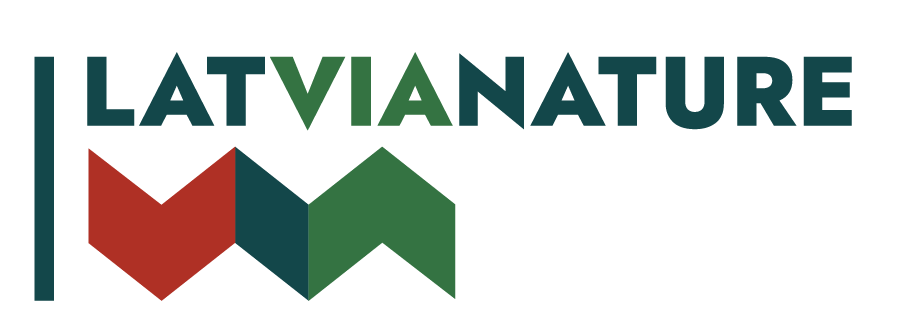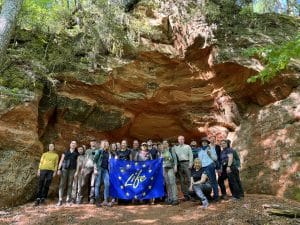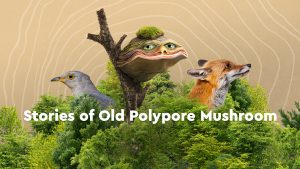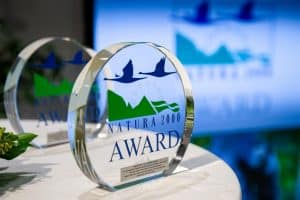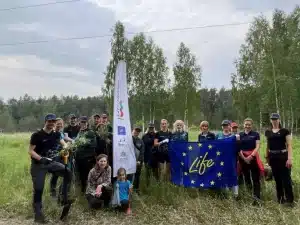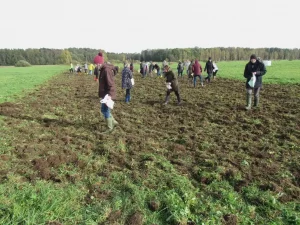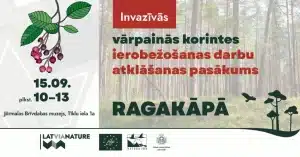Photo gallery available here:>>>
The workshop took place in the Dunduri meadows, which is a large massif of grasslands in the Zemgale Plain. Seeds of plants gathered by hand in natural grasslands were sown in previously harrowed areas of the Dunduri meadows. The composition of species was selected to fit the conditions of the specific location. This year, about 10 kg of a seed mixture consisting of 40 plant species characteristic of moderately wet and wet grasslands were sown on plots with an area of about 0.2 ha, such as devil’s-bit scabious Succisa pratensis, Cambridge milk-parsley Selinum carvifolia, common agrimony Agrimonia eupatoria, quaking-grass Briza media, hoary plantain Plantago media, cowslip Primula veris, glaucous sedge Carex flacca, etc.
Observations from sowings in previous years suggest that this method helps in returning species to the grassland; however, it requires patience and several years. This year, seedlings of grassland plants were also planted for the first time, donated and planted by Rūta Sniedze-Kretalova and Raimonds Indrāns.
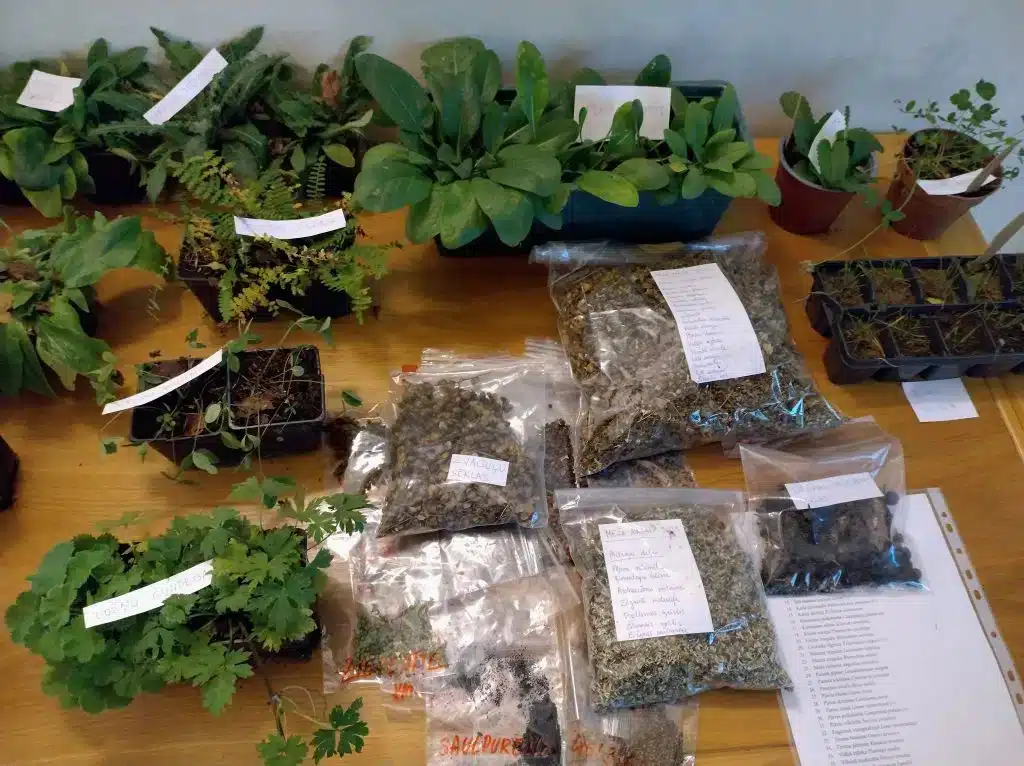
The small rivers of the Dunduri meadows were straightened and turned into ditches during the Soviet era, and the natural flooding cycle was interrupted. Arable land and cultivated grasslands were established here. Nowadays, the grasslands are “managed” by Heck cattle and Konik horses in a large paddock of ca 200 hectares, where the rivers are meandering and overflowing again, while the rest is mowed for hay. The restoration of plant species diversity is still hindered by the lack of natural grasslands – natural sources of seeds – in the surrounding area even 35-40 years after the last plowing. Therefore, despite management efforts, the species characteristic for unimproved grasslands return very slowly.
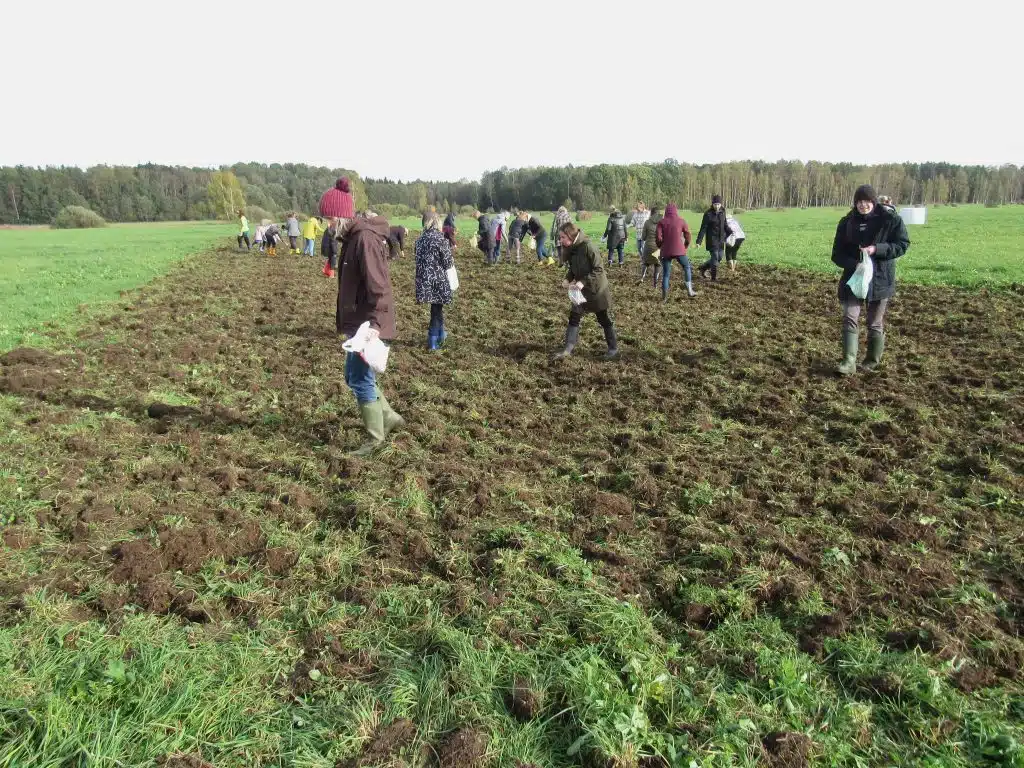
Thanks to the materials prepared by experts of the Latvian Fund for Nature and the Nature Conservation Agency, the idea and significance of the restoration of natural grasslands and sowing as a method is gradually “been sown further” in recent years. However, experts emphasize that it requires in-depth knowledge, and is not as simple as buying a mixture of “meadow flower” seeds in the shop – they are not suitable for restoring natural grasslands despite a tempting look.
“It is important that the experience and knowledge do not remain only in the heads of practicians and some nature experts, but that we share it in a simple and understandable way. Also, the aim of this event was to invite meadow owners to participate, to evaluate what they saw and to reconsider what is useful for their farms. I hope that what was heard and sawn at the event will encourage landowners to more and more value their meadows as a resource”, says Agnese Priede, expert of the Nature Conservation Agency. “If a few years ago this method possibly looked completely funny and impracticable, now quite many grassland owners in Latvia sow wild plants in their meadows. I hope that the local magnificent wild flora will obtain more and more recognition among urban and roadside gardeners and landscape architects in the coming years. This is a way how to create a multifunctional environment that is not only beautiful, but also helps to protect biodiversity of Latvia, and here one must start with comprehension”, A. Priede adds.
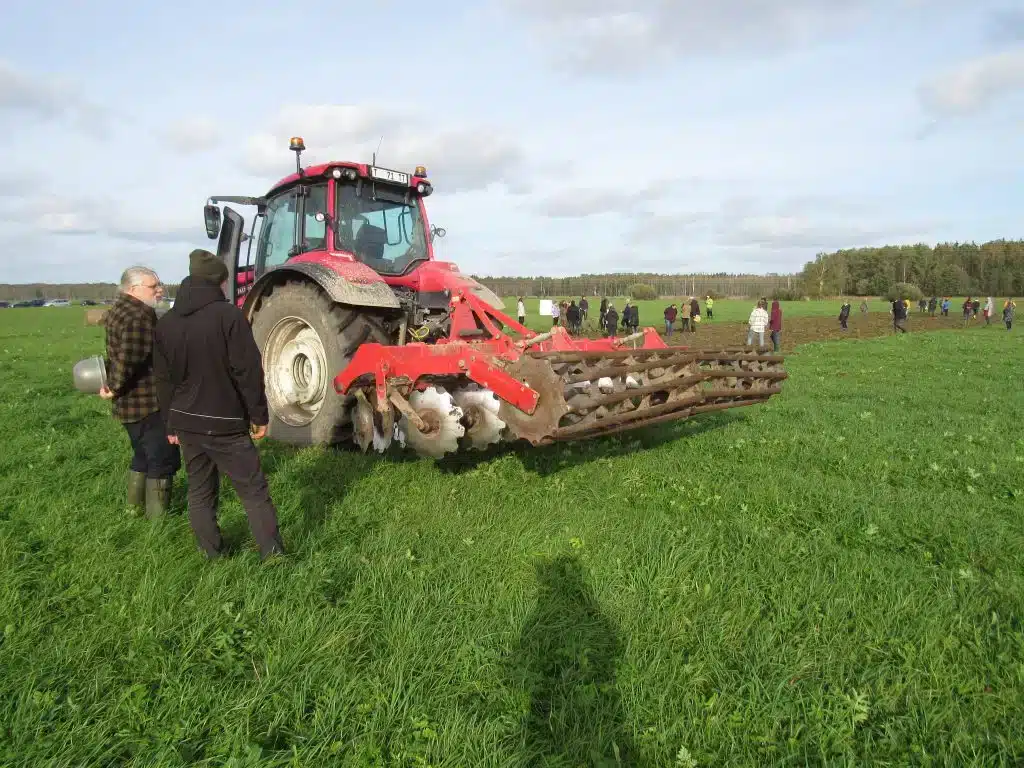
The workshop was organized by the Nature Conservation Agency and the Latvian Fund for Nature. It was financially supported by the European Union LIFE Programme integrated project LatViaNature “Optimising the Governance and Management of the Natura 2000 Protected Areas Network in Latvia” (LIFE19 IPE/LV/000010).
